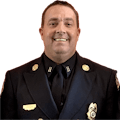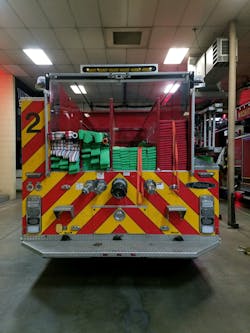All too often when traveling and teaching engine company operations around the country, I’m amazed at the varying layouts of engines. Whether I’m impressed or shocked, I often will ask, “Why did you do this here?” or “What’s the purpose of that thing there?” Usually, the answer is some form of, “This is what we were given” or “Your guess is as good as mine. We hate it!” followed with a sheepish grin.
The purchase of a new engine is a major expense, but more than that it’s the physical representation of a department’s commitment to its community. Citizens not only entrust a department with their hard-earned money but with their life. They deserve an engine that is more than “good enough.” The apparatus should be perfect, with the sole focus of getting the line in service as efficiently as possible, which will give citizens the best chance at survival and at preserving as much of their property as is possible.
Apparatus experts
One of the first things to keep in mind regarding preplanning your next engine design is use every resource that you have. If your department spent seven figures on a new firehouse, it wouldn’t proceed without the services of an engineer or architect. With that in mind, it’s amazing that a fire apparatus that can exceed seven figures often is designed with nothing more than a list of “wants” and a sales representative. Undoubtedly, a sales representative is a valuable resource, but it’s well worth the time to seek out independent apparatus experts.
When we work on specifications for apparatus in my department, we consult local experts, including Capt. Mark Misek (Wichita, KS, Fire Department) and Capt. Rick Mosher (Olathe, KS, Fire Department). These individuals have saved our department large amounts of money a number of times.
It isn’t uncommon to identify a deficiency in a current apparatus that should be addressed in the next machine. Many times, a small change creates a domino effect that causes problems or necessitates changes down the line in other parts of the apparatus that you might not catch until it’s too late. Having an apparatus expert who can recognize these kinds of problems and is familiar with regulations that must be met before meeting with the manufacturer can be invaluable to a successful apparatus order.
When it comes to an engine, there are a couple of things to keep in the forefront when deciding how to set it up. First, don’t forget its mission. The engine should be set up to safely, quickly and efficiently achieve three main tasks: deploy hoselines in as few motions as possible with the least amount of variability regardless of fire type; get water into it; and get water out of it to extinguish fires in less than a minute from the time that the air brake is set. Second, everything that’s on the engine should be there for a reason and should have a dedicated place on the apparatus. Any option or item that’s on the engine that conflicts with that philosophy automatically disqualifies it from the specification of the vehicle.
Four engine generations ago, our specification had walk-through pump panels, with the thought to get personnel off of the street for safety. This seemed like a good plan, but the domino effect showed up in unforeseen ways. Although we never had a member struck by a vehicle while standing at the pump panel, we did experience a number of members who slipped and fell while getting up and down from the walk-through area, including a few significant lost-time knee and ankle injuries. Furthermore, the added time that was necessary to get to the pump panel resulted in increased time from air brake to water flowing.
Because of the injuries, we went back to a side-mounted pump panel. Not only was the occurrence of injuries eliminated, but the considerable decrease in wheelbase resulted in a significant decrease in accidents that happened driving to and from alarms.
If a future recommendation proposes walk-through pump panels on an engine, we would decline that specification unless there is a way to offset the wheelbase and mitigate chances of injury.
More than a decade ago, we began to pull all attack lines off of the rear to meet our one-minute goal as well as to reduce the variability in stretches. All lines are loaded and stretched the same way regardless of hose size, setback or other factors, to ensure that we meet our engine philosophy. This meant that our hosebeds must be low. Thus, each subsequent generation of engine has a lower hosebed than the previous generation had.
Before specifying
Although an engine should be extremely specific for its respective department, some things can be looked at in all cases before writing specifications.
The early stages are a perfect time to involve an apparatus architect. A broad range of valves, pressure governors, gauges and fittings, the routing of pipe and other small items can make or break an apparatus. In some cases, you are best spending the extra money on that premium branded gauge; with some items, you can save money. However, without firsthand knowledge from someone who is familiar with the products, these can be difficult decisions.
When seeking an apparatus architect, you want someone who personally used specified items in extreme environments and under high call volume—not just someone who will make an “educated decision.” At this price range, that’s unacceptable.
Next, measure each item and start laying out compartments. Build wood boxes or put tape on the floor and place everything inside, so you know how much total compartment space will be required. There is nothing worse than pushing a new apparatus into the station and finding that there isn’t enough compartment space or that one oddly shaped item doesn’t fit in any of the apparatus compartments.
Because the tailboard is where the engine earns it keep, I recommend building mockups of your hosebed out of wood, loading your actual hose on it and stretching off of it. Change your layouts, dividers and shapes until you find what works best. The perfect design allows for quick deployment regardless of hoseline size and/or the amount of hose that must come off to get to your destination. A mockup keeps you from making expensive mistakes that can’t be fixed when the engine is complete. The mockup also can double as a great training prop for new members or for stretching inside of the firehouse when the weather conspires to keep your training indoors.
One last thing
Don’t be afraid to make changes and, more importantly, to admit that changes must be made to the specifications.
Every new generation of engine should be better than the previous one.
Have your crews make a gig sheet that notes every problem that’s found or something that could be a little better. When it’s time to start the next engine design process, go through those documents. Some items won’t be possible; some won’t support the core of the basic engine philosophy; some might violate NFPA standards or Department of Transportation regulations. However, some will make their way into the new generation and make your crews more efficient at saving the lives and property of the citizens who purchased the engine for you.
Keith Niemann will present "Getting the Most Out of Your Recruit Training Program" at Firehouse Expo. To register, visit firehouseexpo.com.
About the Author

Keith Niemann
Keith Niemann is a 20-plus-year veteran of the fire service with Wichita, KS, Fire Department's training division, assigned to Firehouse 22. As a field training officer, Niemann responds to all fires and major alarms on his shift as well as serves as a lead instructor, teaching hands-on skills to members of all ranks. He also is the president of the FOOLS of OZ, teaching engine company operations throughout the country.


